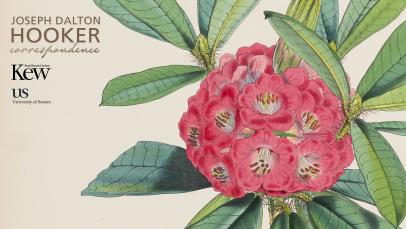Since JDHs last letter from Aden they have been on the Indian Ocean, the most uninteresting sea he has crossed. Sighted Cape Comorin last Thursday & landed at Point de Galle on Friday, a few hours after the 'Precursor'. Thought of FH & English friends on Christmas day. Describes the 'Moozuffer' as more like a yacht than a man of war. Lord & Lady Dalhousie are in the Captain’s cabin whilst he, Fane, Courtenay & Dr Bell are in the ships dirty armoury next to the engine. Indian Navy officers do not like ships being used as passage boats. JDH met a godson of FH’s father, Lieutenant Jermyn. At Ceylon [Sri Lanka] JDH again saw Matilda Rigby who left Colombo where James Smith’s house & property is. JDH finds Lord & Lady D extremely agreeable but indifferent to science. Notes the cuisine as odious. Lady D’s health is better & soon after arriving her father, Lord Tweeddale, Governor of Madras [Chennai], came on board in a grand party. JDH will leave Madras on Friday morning & go to Calcutta [Kolkata]. He has not made many sketches since leaving Cairo, he was too busy botanising in Aden. Nearly all his collections have been destroyed from salt water on board ship. His spare papers were also destroyed so he could not collect at Point de Galle. Intends spending a week with George Gardner [GG] at Candy [Kandy], Ceylon on his way to Borneo. Describes curious boats in Madras. Describes the beauty of Point de Galle & the Cinghalese [Singhalese] people with tortoise shell combs & coca-nut oil in their hair. Notes Areca, Betel-nut palms, bread-fruit, plantain, banana, pineapple, mosquitoes, sand flies & leeches. At Point de Galle party divided into three. JDH went on several walks with GG, his father’s protégé. JDH was glad to introduce GG to Lord D who received him kindly. JDH will write shortly from Calcutta.

The Joseph Dalton Hooker Collection
The Joseph Dalton Hooker Correspondence Project at Kew is making available online the personal and scientific correspondence of the botanist and explorer Sir Joseph Dalton Hooker (1817–1911), Director of the Royal Botanic Gardens’ Kew from 1865-1885. The project was conceived by staff of The University of Sussex and Kew's Library, Art and Archive department and began as a partnership between Kew and the University of Sussex's Centre for World Environmental History. It has been made possible by support from the Stevenson Family Charitable Trust. Letter summaries can be searched through Ɛpsilon, with links to images and transcriptions at the project site at Kew (https://www.kew.org/explore-our-collections/correspondence-collections/joseph-hooker-collections).